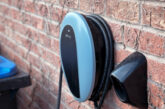
Harmonics only create problems in big industrial installations, right? Wrong, says Julian Grant of Chauvin Arnoux, who explains how harmonics can cause problems in any type of electrical system – including ordinary domestic installations.
Computers that don’t work reliably, circuit protective devices that operate unexpectedly, motors that run noisily, cables and transformers that run hotter than they should – these are just a few of the problems that can occur if there’s a high level of harmonics in an electrical system. In the past, harmonics were usually an issue only for electrical installations in large factories, but now they’re everywhere, and no contractor can afford to ignore them.
What are harmonics, where do they come from and what can be done about them?
Put simply, harmonics are currents in an electrical system at frequencies that are whole-number multiples of the supply frequency. In other words, if the supply is 50 Hz, the harmonics are currents at 2 x 50 Hz = 100 Hz, 3 x 50 Hz = 150 Hz, 4 x 50 Hz = 200 Hz and so on.
The multiplier for a particular harmonic is called its ‘order’ so, for example, a harmonic at 150 Hz is a third-order harmonic. In theory, the orders can go on forever but harmonics above, say, the 50th order are usually so small they don’t need to be considered.
To understand where harmonics come from, let’s assume that the power delivered by an energy provider has a nice smooth sinewave voltage waveform. If this voltage is applied to a resistive load like a heating element, the current in the load will also be a nice smooth sinewave.
But not all loads are resistive. Some, like computer power supplies and motor controllers are definitely not, and a sinewave voltage applied to these will produce a current that’s a distorted version of a sinewave. Loads like this are called non-linear loads.
There’s some complicated maths which shows that the distorted current waveform produced by non-linear loads is, in fact, made up of current at the supply frequency plus currents at harmonic frequencies. In other words, non-linear loads produce harmonics.
Why have harmonics become such a widespread issue in recent times?
The answer is simple – we’re now connecting many more non-linear loads to our electrical installations.
Almost all electronic devices are non-linear loads. That includes computers, televisions, phone chargers, microwave cookers, fluorescent lamps and LED lighting. Washing machine motor speed controllers produce significant harmonics, and other domestic appliances like fridges and cookers increasingly use electronic controls.
In addition to this, many homes and offices are now being equipped with EV charge points and have solar panels on the roof. Put simply, these days non-linear loads are everywhere, which means that harmonics are also everywhere.
Does this matter?
Unfortunately, it does. Harmonics can disrupt the normal operation of electrical systems. They tend to produce excessive heat in conductors and components and can cause all sorts of issues with sensitive electronic equipment. They make lights flicker and motors buzz. They’re also a common source of nuisance tripping in protective devices.
Harmonic currents can also badly affect the accuracy of measurements you make on an electrical system. This is particularly important if you’re an electrician because you’ll be using those measurements to certify that the installation complies with the Wiring Regulations and, for commercial installations, the Electricity at Work Regulations.
The root of the measurement problem is that many older clamp meters won’t give reliable readings if significant levels of harmonics are present in the supply.
A case in point
To provide an example, we recently made some measurements on a circuit supplying CFL (compact fluorescent lamp) luminaires, using a “standard” clamp meter from a well-known manufacturer.
It showed the RMS current as 2.9 A, whereas measurements carried out with a more capable clamp meter revealed the true RMS current to be 6.0 A.
That’s why it’s important to make sure that the instruments you’re using and, in particular, your clamp meters, are designed to give accurate results in the presence of harmonics.
Examples of clamp meters that meet this requirement are the F407 and F607 from Chauvin Arnoux. These measure currents up to and including the 25th harmonic (1250 Hz), and they also feature true RMS measurement, which means that the accuracy of the results they deliver doesn’t depend on the current or voltage being measured having a sinusoidal waveform.
In today’s world, where almost everything seems to be controlled electronically, problems with harmonics aren’t going away. Wise contractors are those who familiarise themselves with these problems and ensure that they’re well-equipped to deal with them.
FOR MORE DETAILS (AND A BIT MORE MATHS) CHECK OUT THE CHAUVIN ARNOUX UK FREE RESOURCE WEBSITE BY CLICKING HERE !









